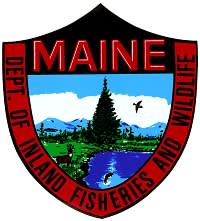Maine Department Urges Caution, Safety Before Venturing on Ice

Small lakes and ponds are beginning to ice over, and some eager ice anglers are already catching fish through the ice.
The Maine Department of Inland Fisheries and Wildlife urges all ice anglers to check the ice before venturing out to fish during the early season, and to check the 2013 Open Water and Ice Fishing law book to comply with the regulations. Please visit http://www.maine.gov/ifw/warden_service/safety.html#ice for general ice thickness guidelines.
“Remember, there are many opportunities to ice fish throughout the season,” said Governor Paul R. LePage. “While we encourage anglers to enjoy ice fishing, we urge everyone to be safe. Please check the ice before venturing out to fish.”
Maine has many year-round fishing opportunities, and on some lakes and ponds in the state, it is legal to ice fish starting December 1. The department stocks many lakes and ponds with trout and landlocked salmon, and you can find a list of stocked waters on the department’s website at http://www.maine.gov/ifw/fishing/reports/stocking/stocking.htm.
For those interested in catching early season trout and salmon, check the law book and look for waters marked with the season date code “D”. Waters with the season date code “D” are open to both open water and ice fishing from December 1 through April 30 for all fish. Unless otherwise noted, general law fishing tackle rules apply, which allow for the harvest of trout and salmon, and the use of all legal forms of bait, artificial lures and artificial flies.
Anglers should check the 2013 Open Water and Ice Fishing law book before fishing. The 2014 Open Water and Ice Fishing law book will be available shortly before Christmas.
Before venturing on the ice, please check the ice to ensure that is safe. The department offers these tips for ice safety:
- Never guess the thickness of the ice – Check it! Check the ice in several different places using an auger or some other means to make a test hole and determine the thickness. Make several, beginning at the shore, and continuing as you go out.
- Check the ice with a partner, so if something does happen, someone is there to help you. If you are doing it alone, wear a lifejacket.
- If ice at the shoreline is cracked or squishy, stay off! Watch out for thin, clear or honeycombed ice. Dark snow and dark ice are other signs of weak spots.
- Avoid areas with currents, around bridges and pressure ridges. Wind and currents can break ice.

